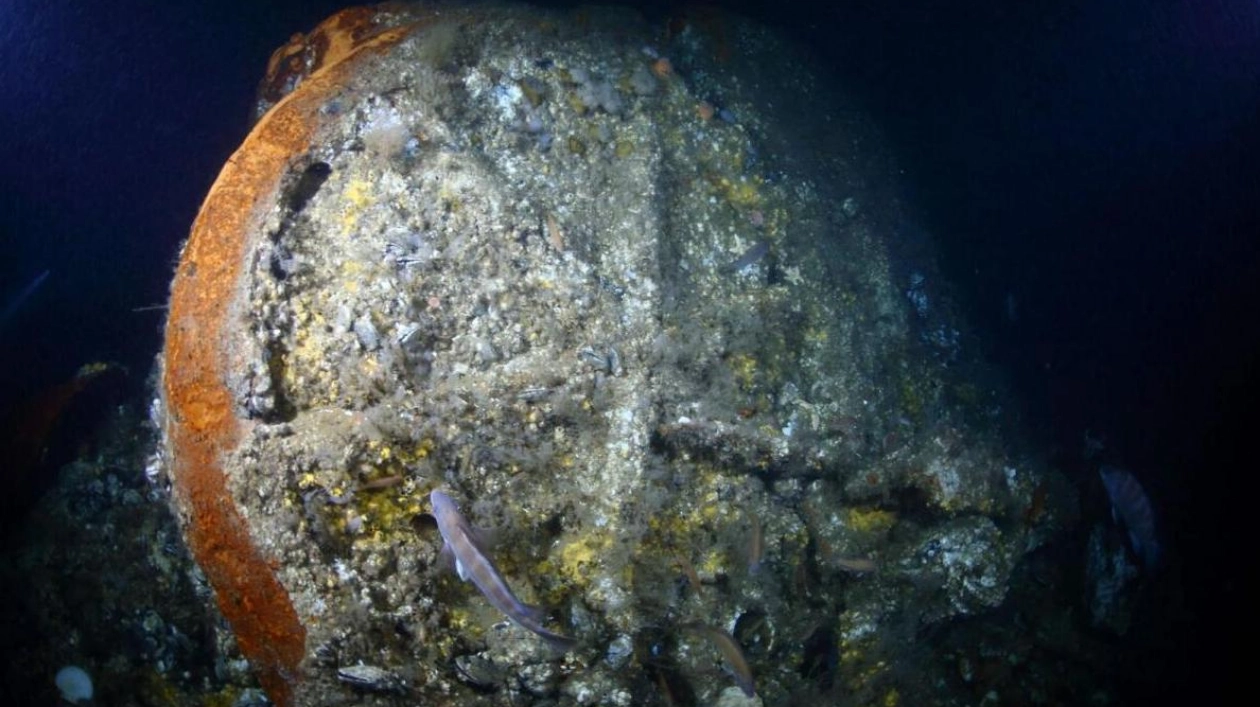A US dive team has located the wreck of the French steamship Le Lyonnais, which sank in the Atlantic Ocean in 1856 following a 'hit-and-run' collision with an American sailing vessel, resulting in the loss of 114 lives. Le Lyonnais, constructed in 1855 and considered state-of-the-art at the time, was en route back to France after completing its maiden voyage from Le Havre to New York when the tragic event unfolded.
Jennifer Sellitti of Atlantic Wreck Salvage, a New Jersey-based company, revealed that a team aboard the dive boat D/V Tenacious discovered the wreckage of Le Lyonnais last month, concluding a two-decade search. Sellitti stated that divers confirmed the identification of the ship in waters 320km off New Bedford, Massachusetts, within the Georges Bank area. The exact location is currently undisclosed.
"She certainly doesn't look as good as she used to," Sellitti commented. "She was really broken apart." Sellitti noted that the North Atlantic is a harsh environment for shipwrecks, with storms and tides contributing to the ship's deterioration. The Nantucket shoals are notorious for shifting sands that can completely bury wrecks.
Sellitti emphasized that measurements of an engine cylinder were crucial in identifying the vessel. The iron-hulled Le Lyonnais, equipped with both sails and a steam engine, was built by British shipmakers Laird & Sons for Compagnie Franco-Americaine to provide passenger and mail services across the Atlantic.
"The 1850s marked the transition from sail to steam," Sellitti explained. "This was one of France's early attempts to establish a successful passenger line." Le Lyonnais had transported cargo and mail to New York and was returning to Le Havre with its first batch of passengers, predominantly French.
On the night of November 2, 1856, Le Lyonnais, carrying 132 passengers and crew, collided with the American barque Adriatic, which was sailing from Maine to Georgia. Jonathan Durham, captain of the Adriatic, recounted in a statement published in The New York Times on November 19, 1856, that the collision occurred around 11pm on a starlit but "hazy" night when Le Lyonnais "suddenly altered course, making a collision unavoidable."
Durham reported that the Adriatic sustained significant damage but managed to reach Gloucester, Massachusetts, two days later, while Le Lyonnais continued its journey. In reality, the French ship had suffered extensive damage—a hole at the waterline and another likely near its coal bunkers—and sank several days later. A few survivors were rescued by another vessel.
Sellitti, whose book about the incident, The Adriatic Affair: A Maritime Hit-and-Run Off the Coast of Nantucket, is set to be released in February 2025, described the sinking of Le Lyonnais as "a major event at the time." The American captain was arrested and tried in France, and the collision sparked novel maritime liability questions regarding the interaction between sailing vessels and steamships at sea.
The disaster, which is referenced in Jules Verne's novel Twenty Thousand Leagues Under the Sea, garnered significant international attention. However, Sellitti noted that when the US Civil War erupted in 1861, "everyone shifted their focus to the Civil War."






